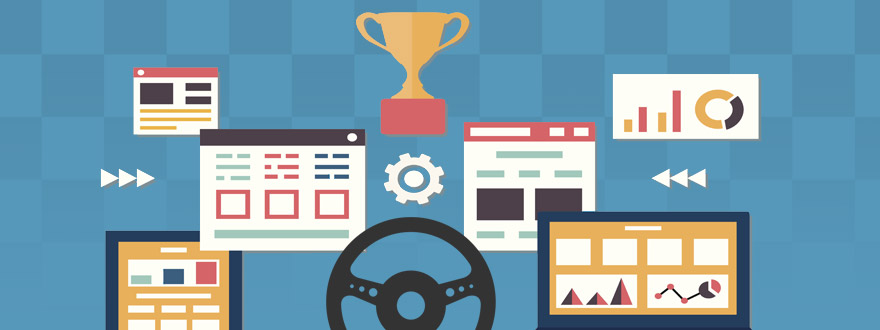Gamification’s place in business

For years, gamification was a buzzword; a trend surrounded by hype. Today it’s almost standard for creating customer engagement. As consumers, many of us participate in some way. Think of your favorite wellness, fitness or budgeting app. We earn rewards for buying coffee, badges for reaching fitness milestones, or even cash back from loyalty program—the list is long and only getting longer.
As gamification has matured and gone digital over the past decade, more businesses have started using it internally to engage employees and change company culture.
Whether or not businesses should design their own gamification program in the workplace is less a question of “will this work?” and more “how can we make this work for us?”
Proof that gamification works
By making otherwise mundane tasks appealing through game-like components, gamification appeals to basic human psychology. People are people; at work or going about our day, we respond when something triggers our real, human emotions to influence our behavior. And being rewarded for doing something makes us want to keep doing it.
Companies that thoughtfully and effectively implement internal gamification programs realize real results.
 |
 |
 |
 |
| One collaboration company’s brainstorming groups grew generated ideas by 58%.1 | A well-known motor company motivated 67% of their employees to work out.2 | One regional bank raised customer acquisition by nearly 700%.2 | A consulting firm raised participation in employee recognition from 5% to 90%.2 |
 |
 |
| One collaboration company’s brainstorming groups grew generated ideas by 58%.1 | A well-known motor company motivated 67% of their employees to work out.2 |
 |
 |
| One regional bank raised customer acquisition by nearly 700%.2 | A consulting firm raised participation in employee recognition from 5% to 90%.2 |
Recently, even commercial fleets have started implementing gamification to affect change within their operations and workforce.
Part of the global market and growing
Today, gamification is a mature method for building a stronger business across markets, industries and borders. As a method for incentivizing and driving employee engagement, gamification is expected to become more of a fundamental part of businesses.
| In 2018, the gamification market reached a global value worth of $6.8 billion. | By 2024, that global value worth is expected to reach $40 billion. | The corporate sector will be the biggest customer of game-based learning solutions. |
(Source: ReportLinker, Global Gamification Market By Solution , By Deployment , By Organization Size , By Application , By End-User Vertical , By Region, Competition, Forecast & Opportunities, 2024)
Fleet gamification on the rise
Safety is one of a fleet manager’s top priorities; so is fuel efficiency. Commercial fleets have implemented gamified programs to motivate and to incentivize drivers to adopt safer, more fuel-efficient driving behaviors. Fleet gamification is being used to attract technicians, boost productivity and even self-motivate commercial drivers to be safer on the roads. Combined with healthy competition among drivers, these programs are becoming more popular and widespread throughout the industry. To learn more, read our online article.
References
1 Barclay Rae: Gamifying the Service Desk, Real value beyond the hype2 Yu-kai Chou: A Comprehensive List of 90+ Gamification Cases with ROI Stats





